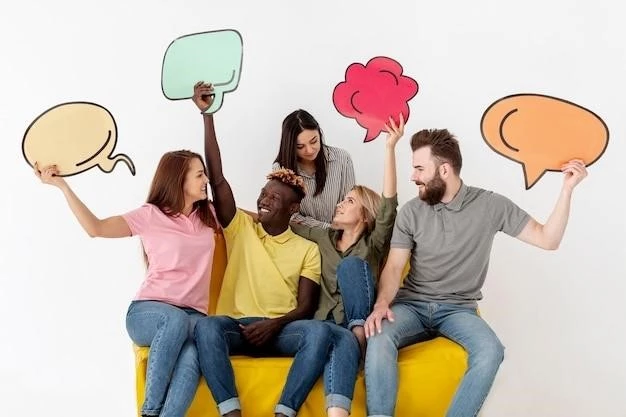Nonverbal Communication: Beyond Words
In the intricate tapestry of human interaction, language serves as the primary thread, weaving narratives, conveying thoughts, and shaping relationships. Yet, beyond the spoken word lies a silent symphony of nonverbal cues, a complex and often subtle language that carries its own weight in communication. This realm of nonverbal communication, encompassing gestures, facial expressions, posture, and even the space we occupy, plays a crucial role in shaping our perceptions, influencing our interactions, and ultimately, defining the essence of our communication.

The Power of Nonverbal Cues
Nonverbal communication, often referred to as “body language,” transcends the confines of spoken words, offering a unique window into our inner world. It is a powerful tool that can amplify, contradict, or even replace verbal messages. A simple smile can convey warmth and acceptance, while a furrowed brow might signal disapproval or concern. The way we stand, the distance we maintain, and the tone of our voice all contribute to the intricate dance of nonverbal communication.
Types of Nonverbal Communication
The realm of nonverbal communication encompasses a vast array of cues, each carrying its own significance. Some of the key types include:
- Kinesics: This refers to body movements, including gestures, facial expressions, eye contact, and posture. A firm handshake can convey confidence, while a slumped posture might suggest disinterest or fatigue.
- Proxemics: This branch focuses on the use of space in communication. The distance we maintain from others can signal intimacy, formality, or discomfort. For instance, a close proximity might indicate a sense of closeness, while a greater distance might suggest formality or a lack of comfort.
- Haptics: This refers to the use of touch in communication. A gentle touch on the arm can convey empathy, while a firm pat on the back might express encouragement or congratulations.
- Chronemics: This deals with the perception and use of time in communication. Punctuality, for example, can be a cultural indicator of respect and professionalism.
- Paralanguage: This encompasses vocal cues such as tone, pitch, volume, and rhythm. A soft, gentle tone might convey empathy, while a loud, assertive tone might indicate confidence or dominance.
Decoding Nonverbal Cues
While nonverbal cues can be powerful tools of communication, their interpretation can be complex and nuanced. Cultural differences play a significant role in shaping the meaning of nonverbal signals. A gesture that is considered polite in one culture might be offensive in another. For example, a thumbs-up gesture is commonly used to express approval in Western cultures, but it can be considered rude in some parts of the Middle East.
Furthermore, individual differences in personality, temperament, and social context can influence the interpretation of nonverbal cues. It is essential to consider the totality of the communication context, including the verbal message, the surrounding environment, and the relationship between the communicators, to accurately interpret nonverbal signals.

The Importance of Nonverbal Communication
Nonverbal communication is an integral part of effective communication, contributing significantly to our ability to understand and be understood. It enhances the clarity and impact of our messages, strengthens relationships, and facilitates a deeper understanding of our interactions.
In professional settings, nonverbal cues can influence the perception of credibility, confidence, and professionalism. In personal relationships, nonverbal communication plays a crucial role in expressing emotions, building trust, and fostering intimacy. By mastering the art of nonverbal communication, we can navigate the complexities of human interaction with greater understanding, empathy, and effectiveness.
Conclusion
Nonverbal communication is a powerful and often overlooked aspect of human interaction. It transcends the limitations of spoken words, providing a rich tapestry of cues that shape our perceptions, influence our behaviors, and define the essence of our communication. By understanding the nuances of nonverbal cues and the cultural and individual factors that shape their interpretation, we can enhance our communication skills, strengthen our relationships, and navigate the complexities of human interaction with greater awareness and effectiveness.










